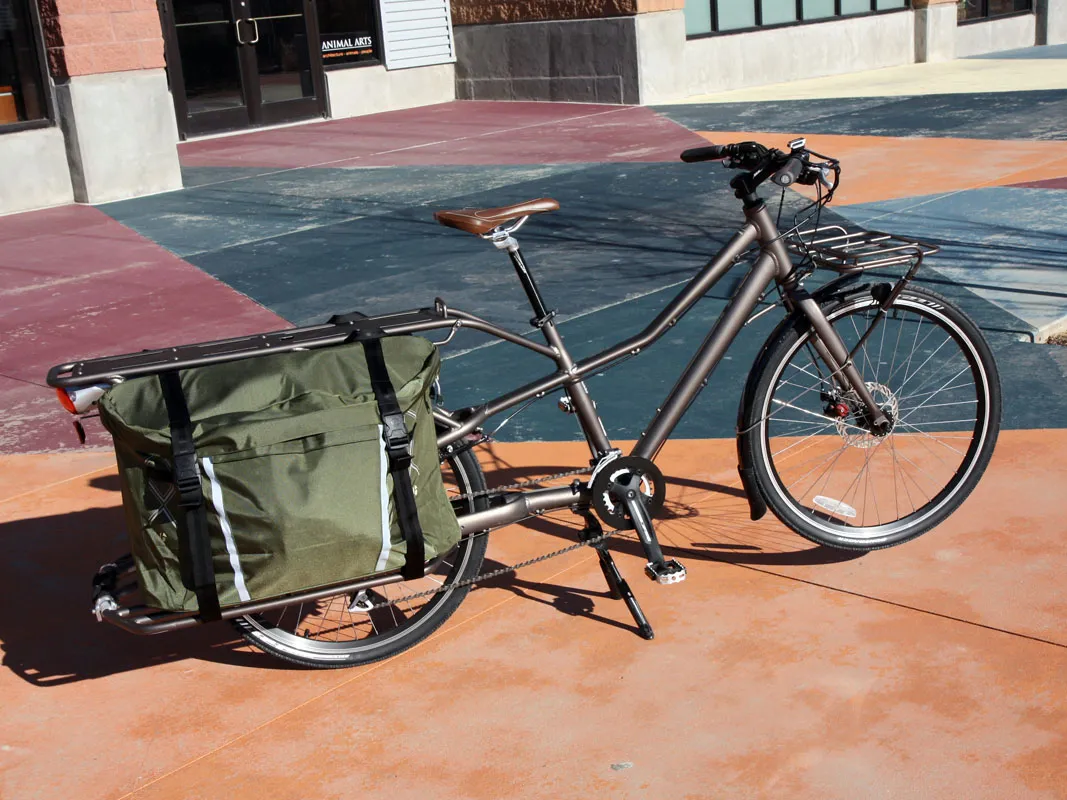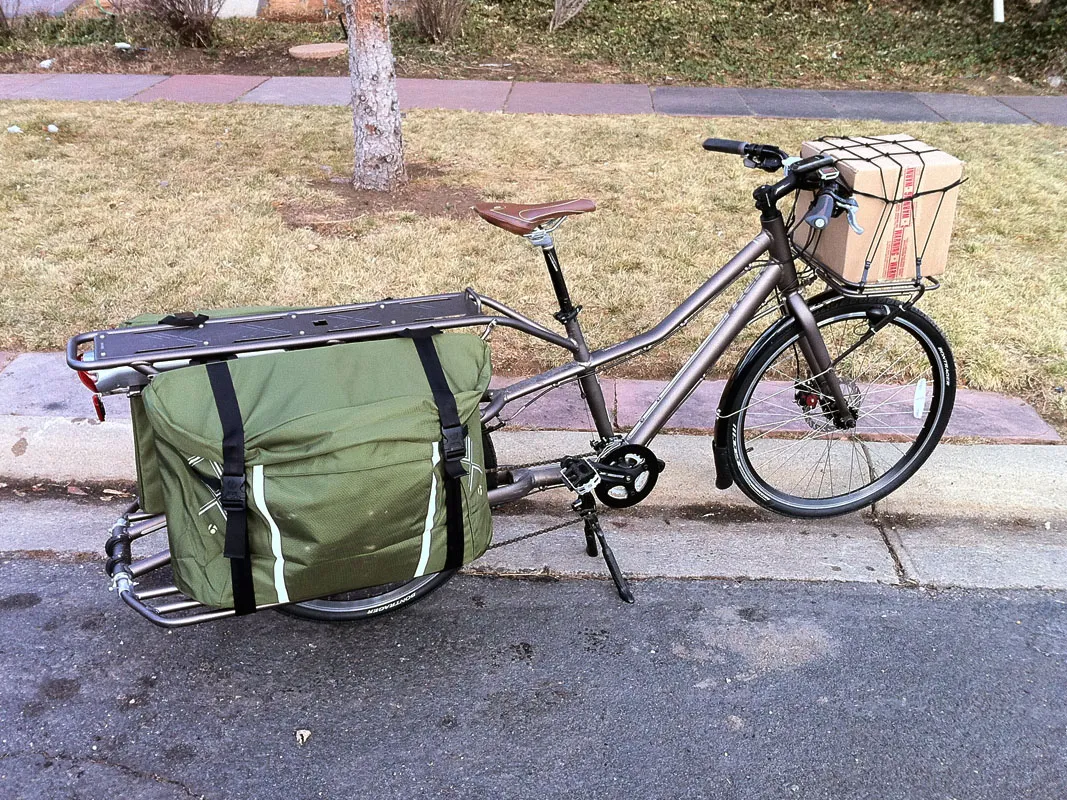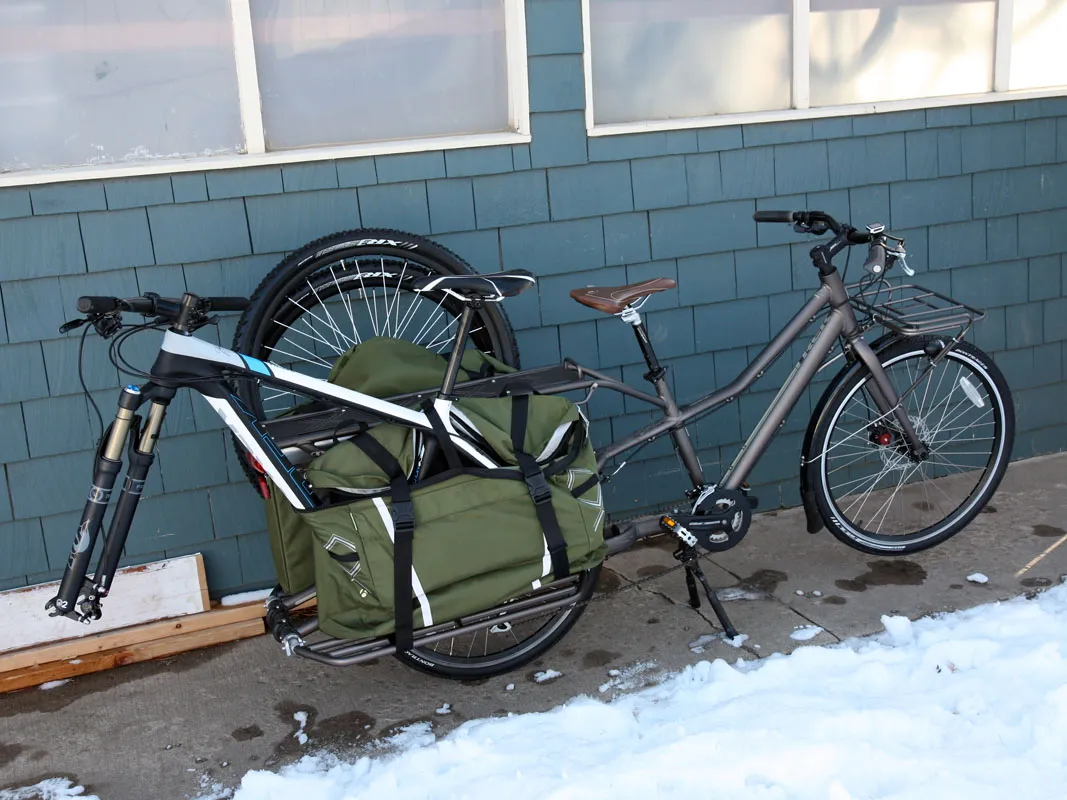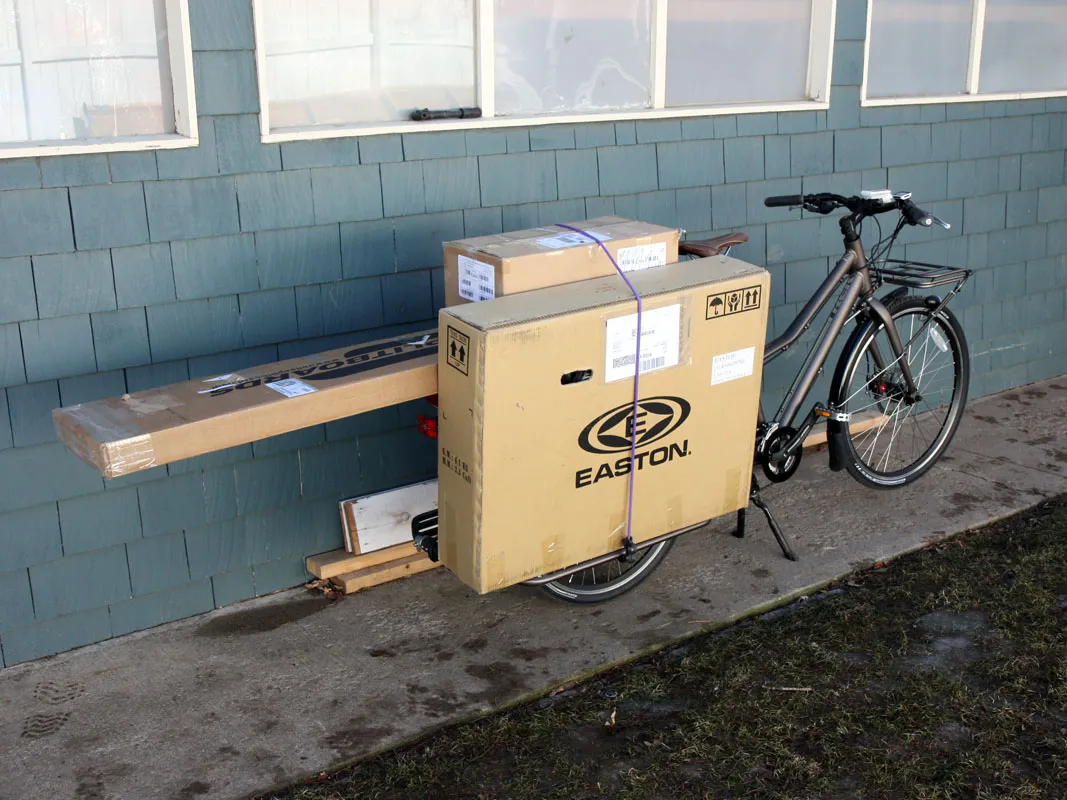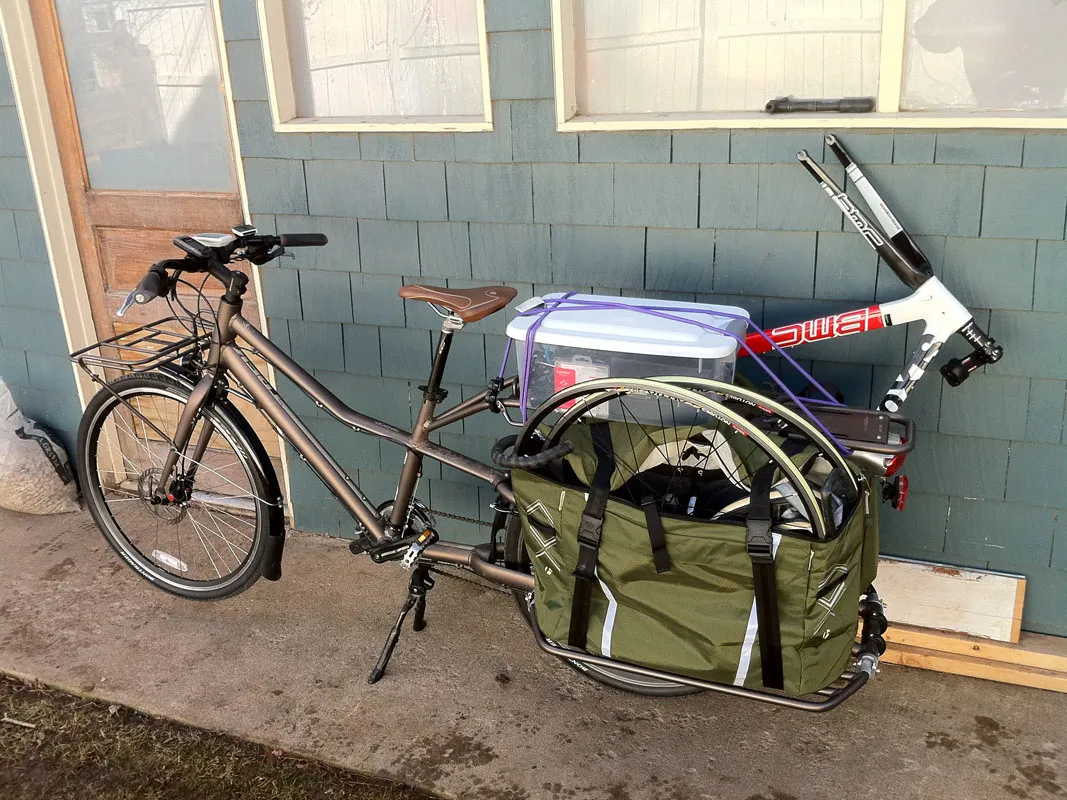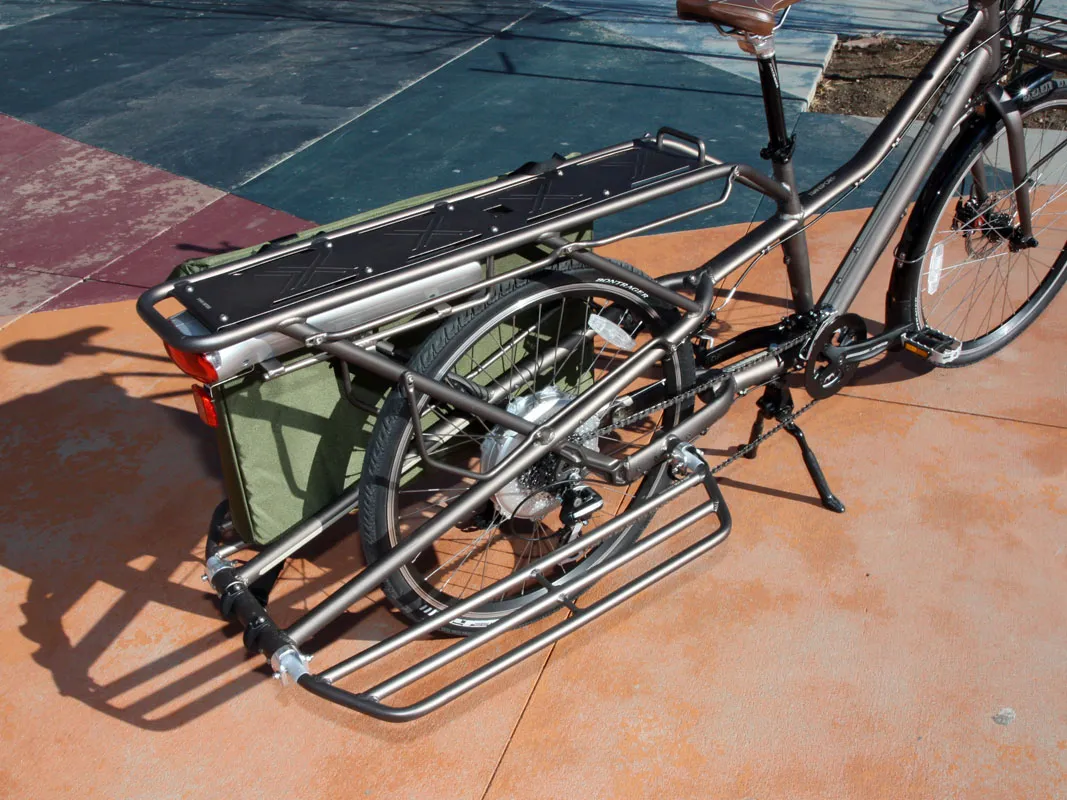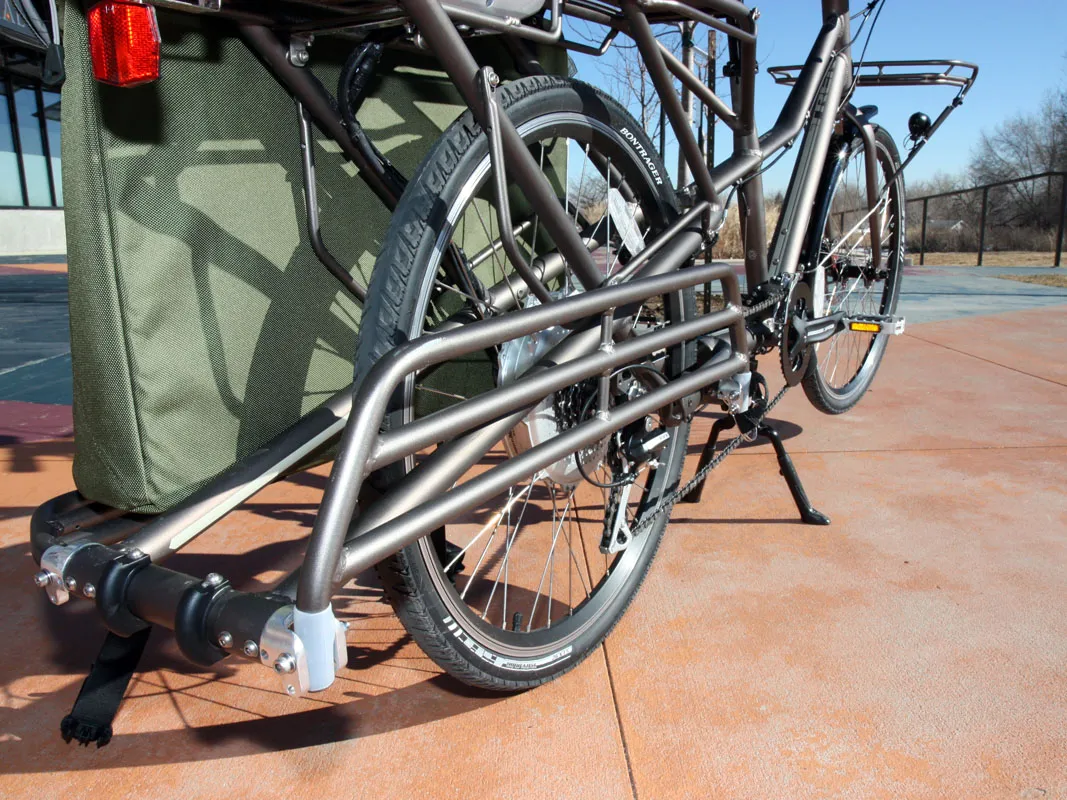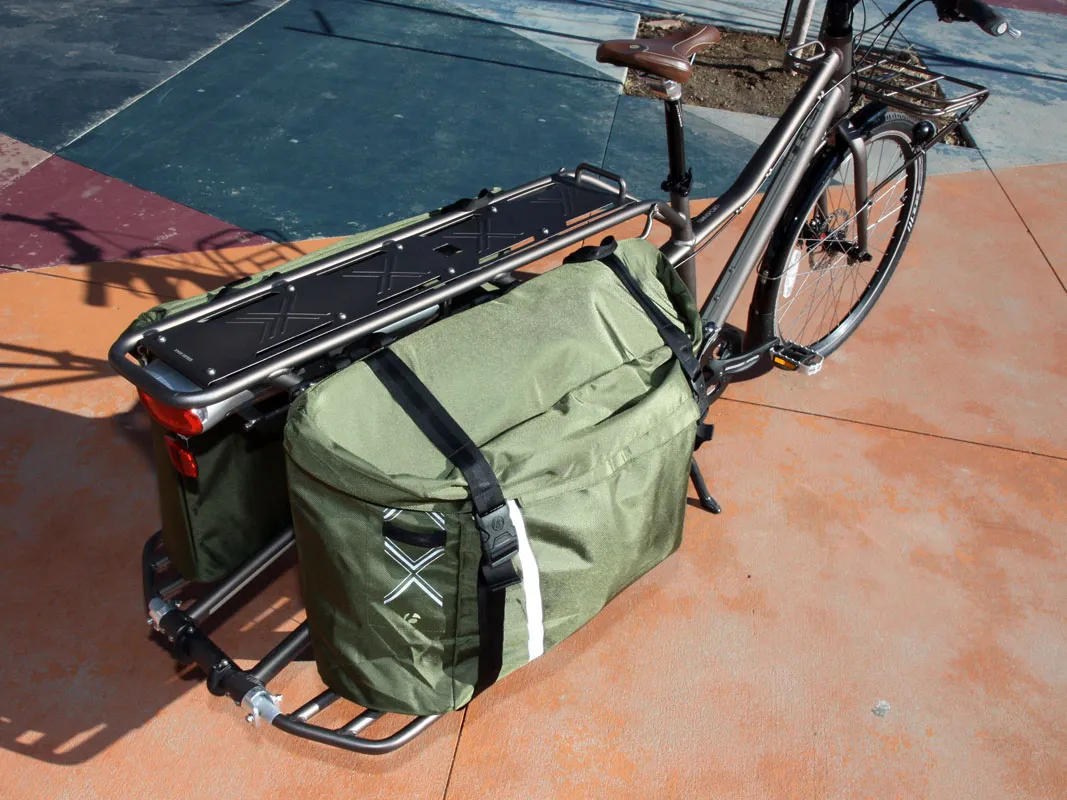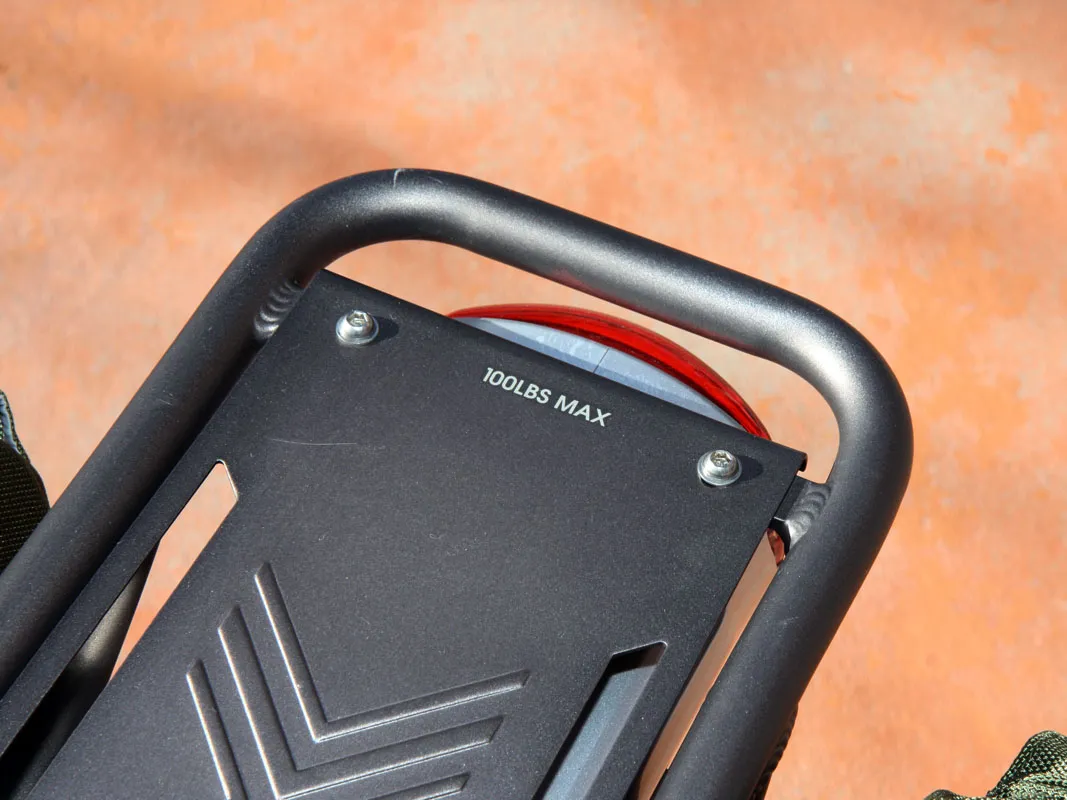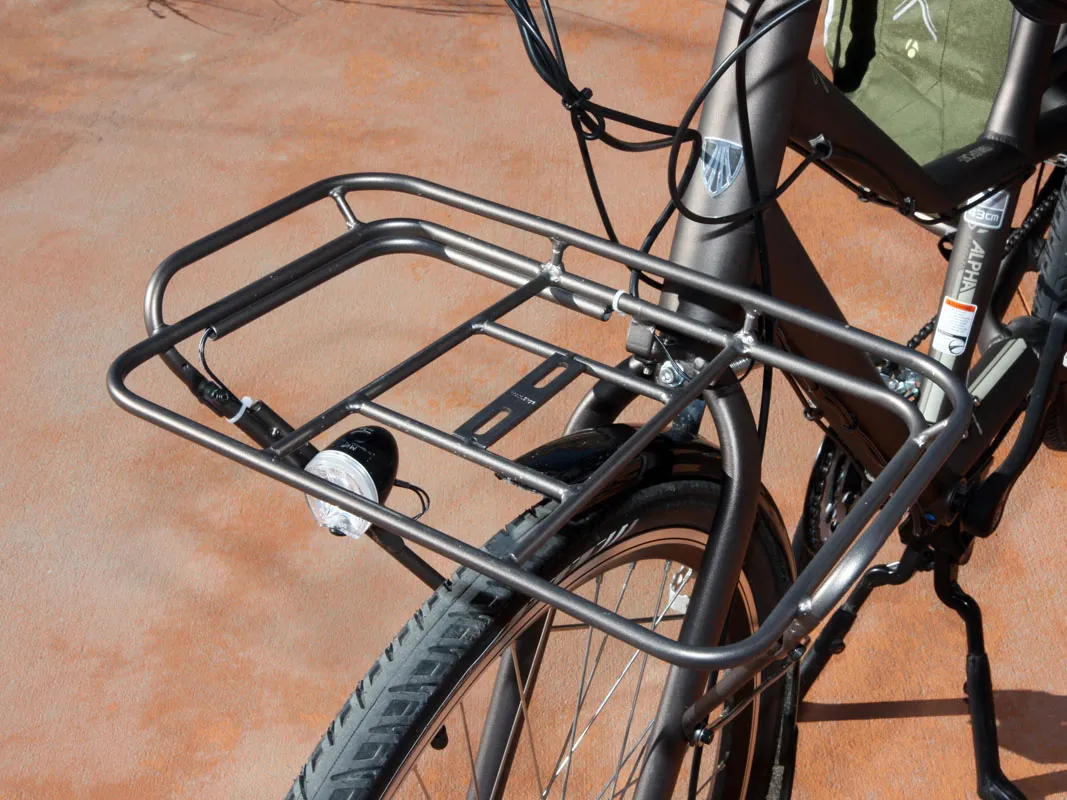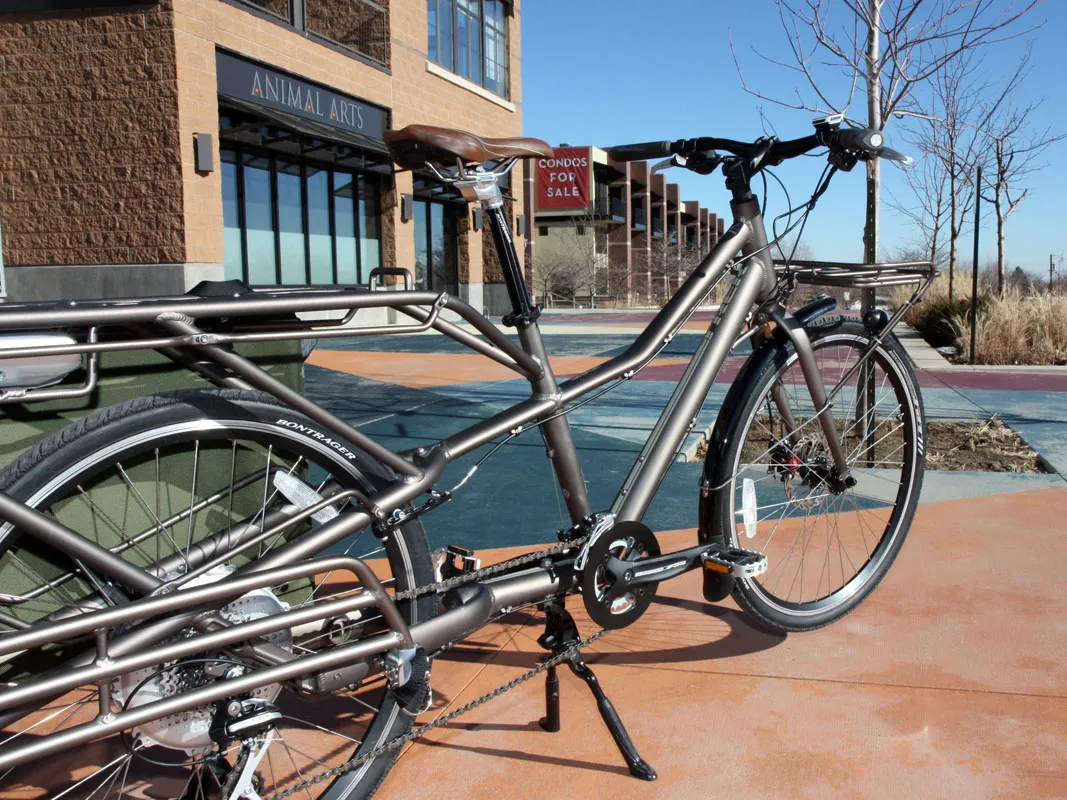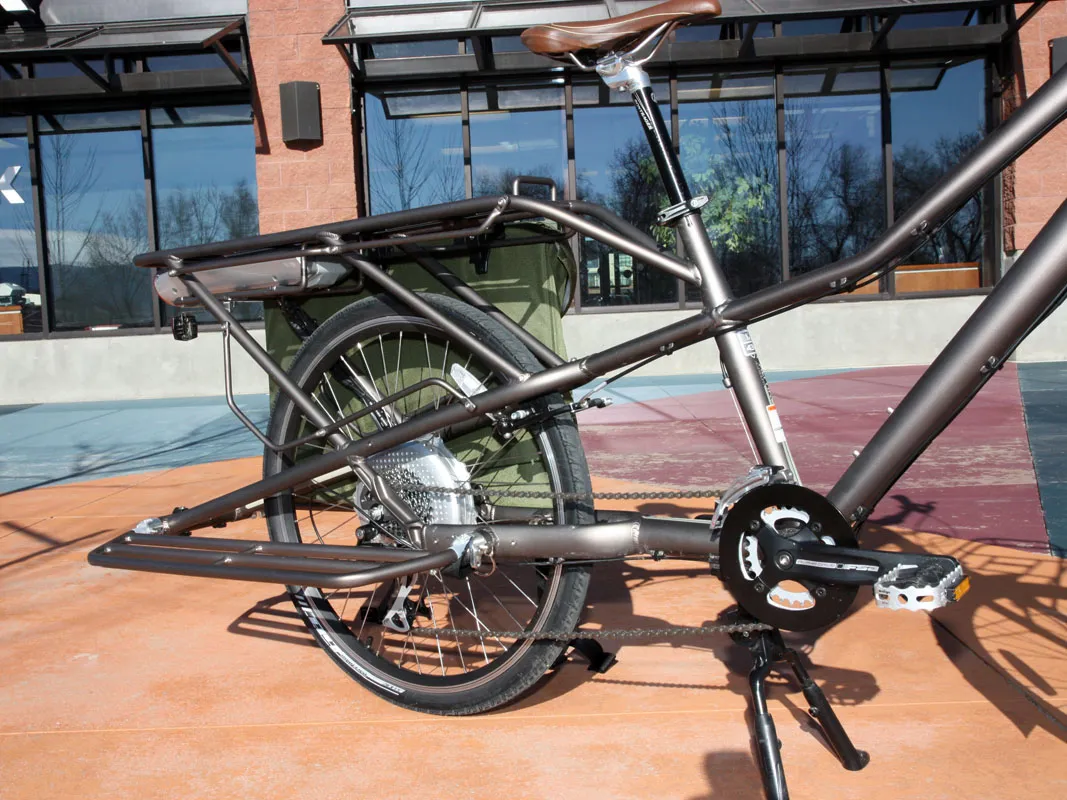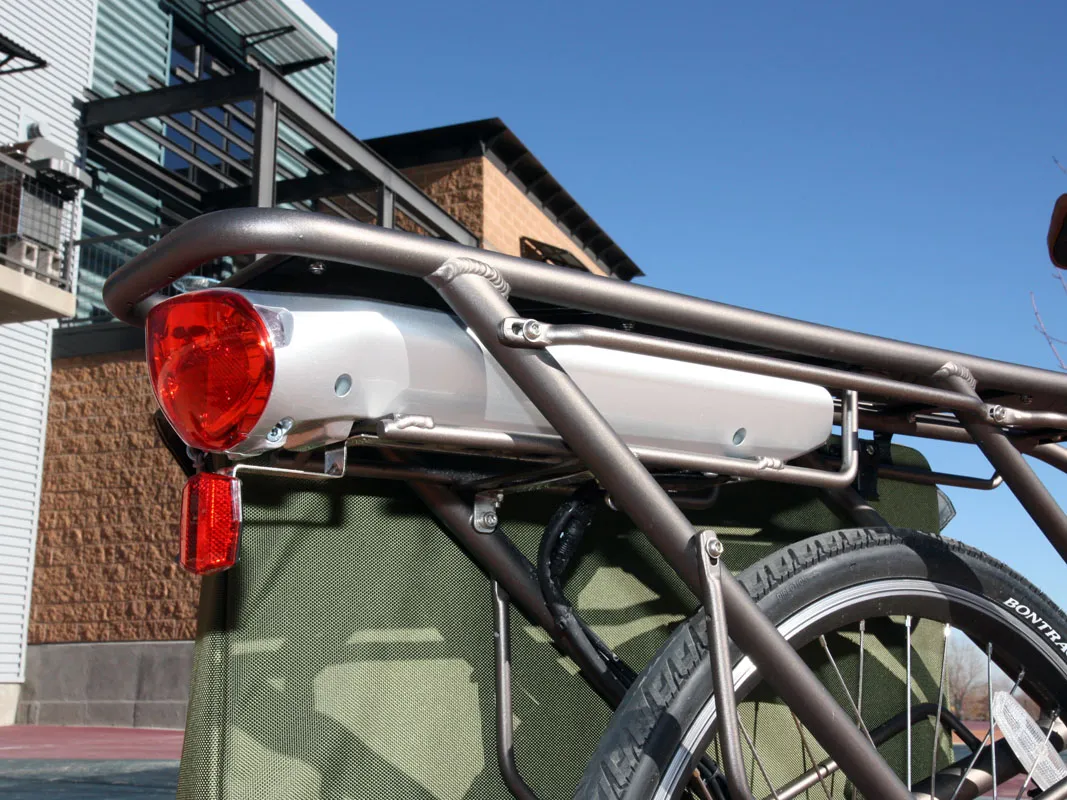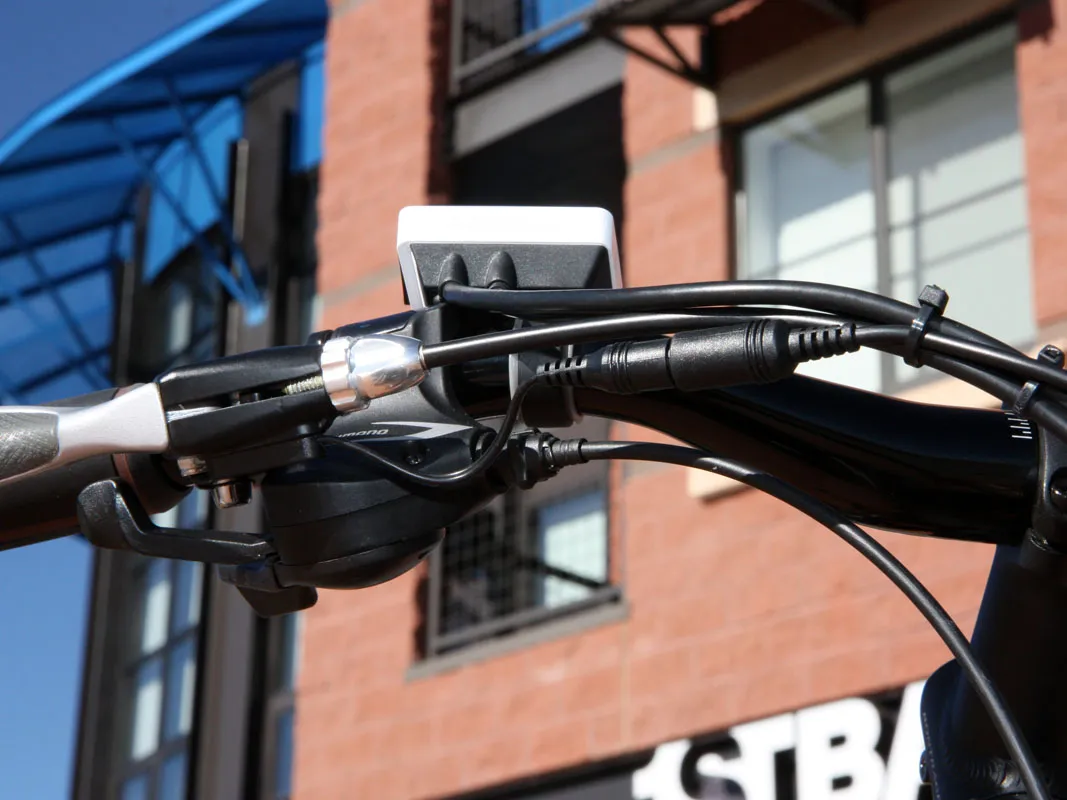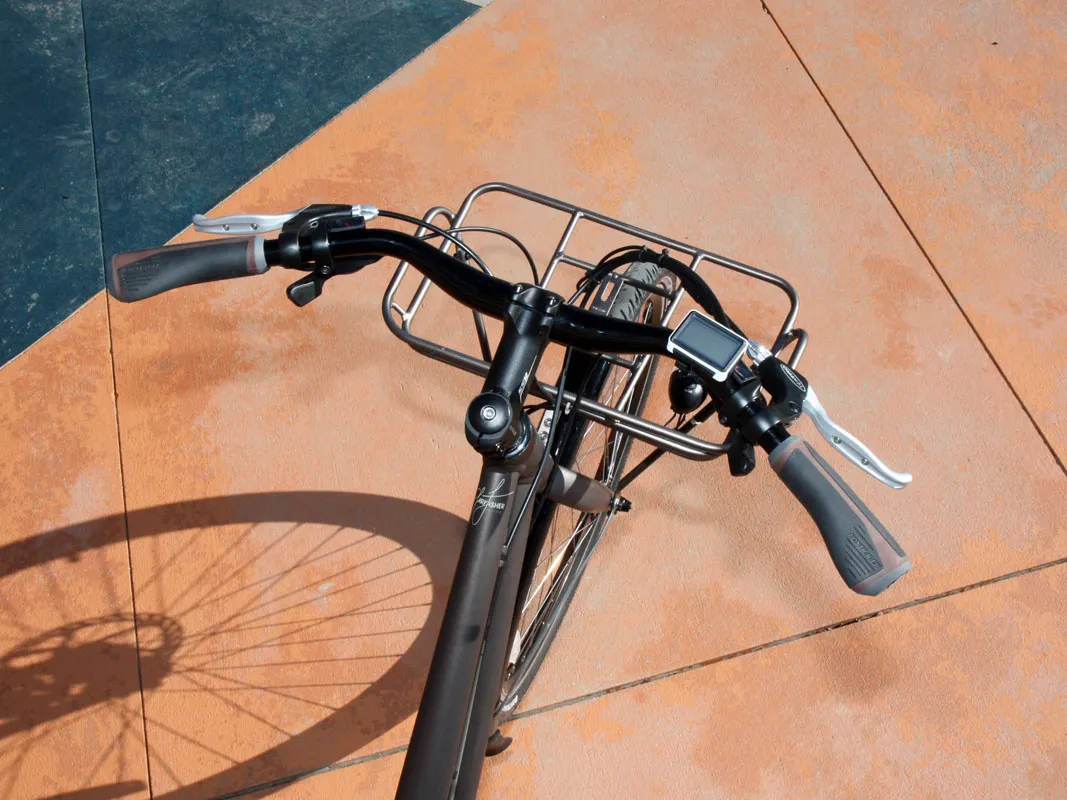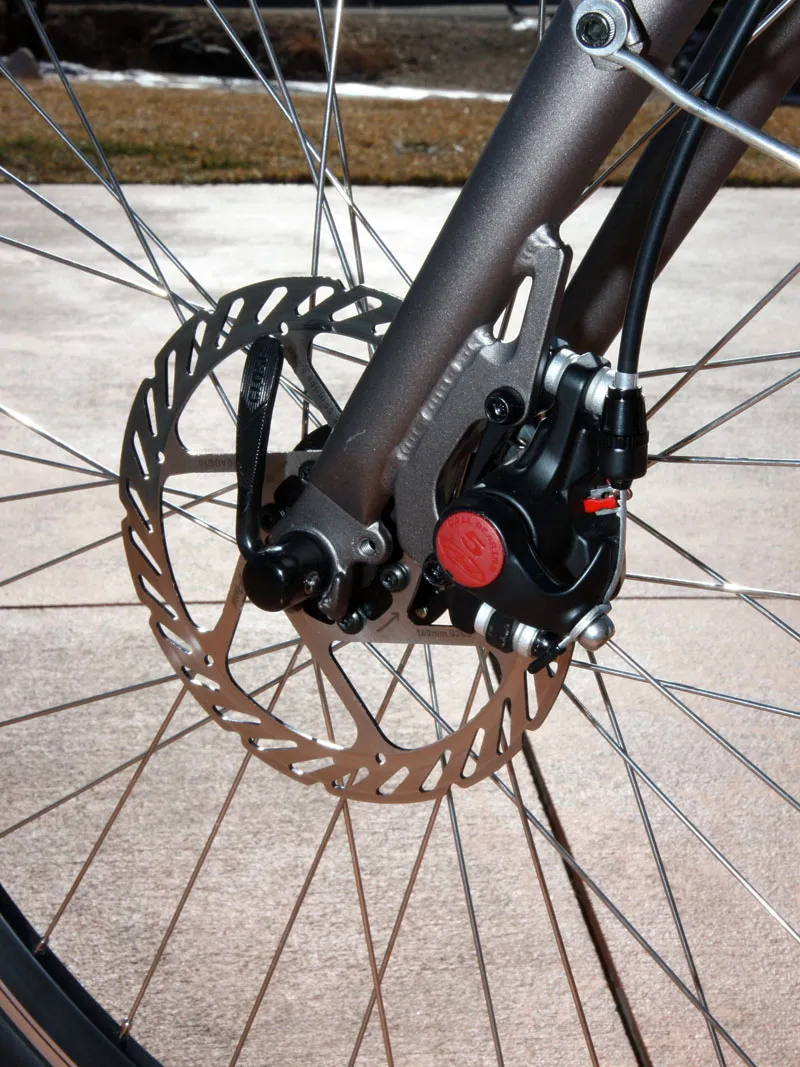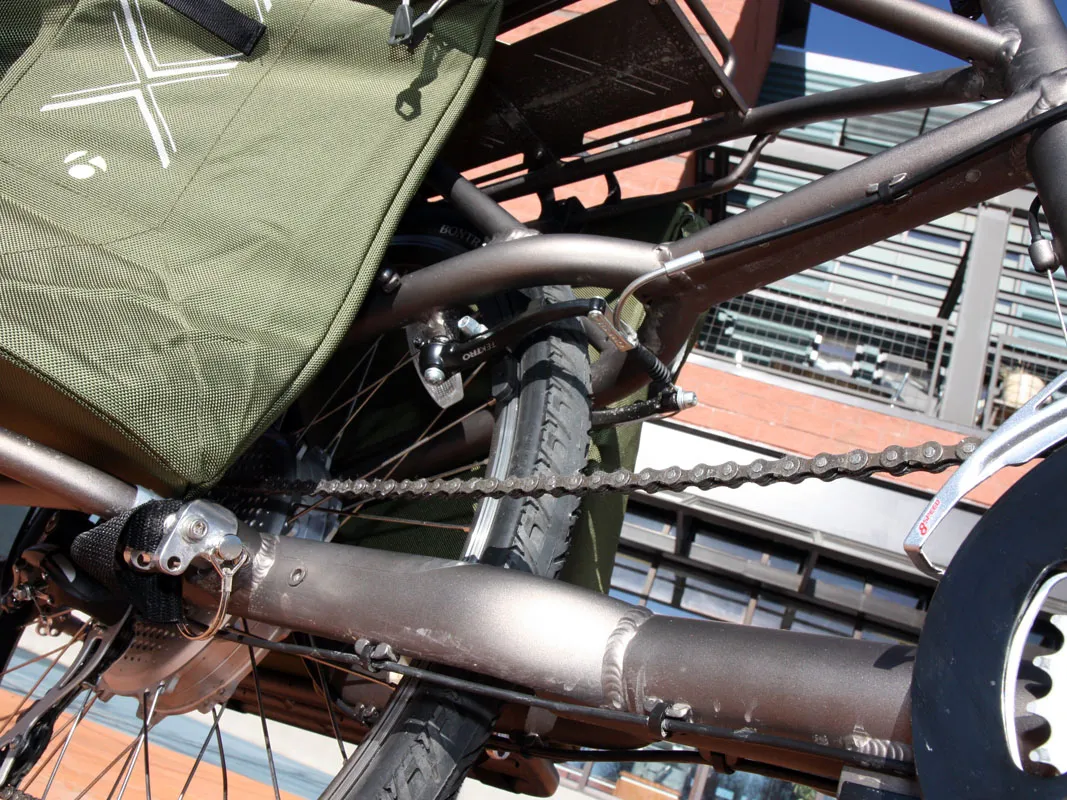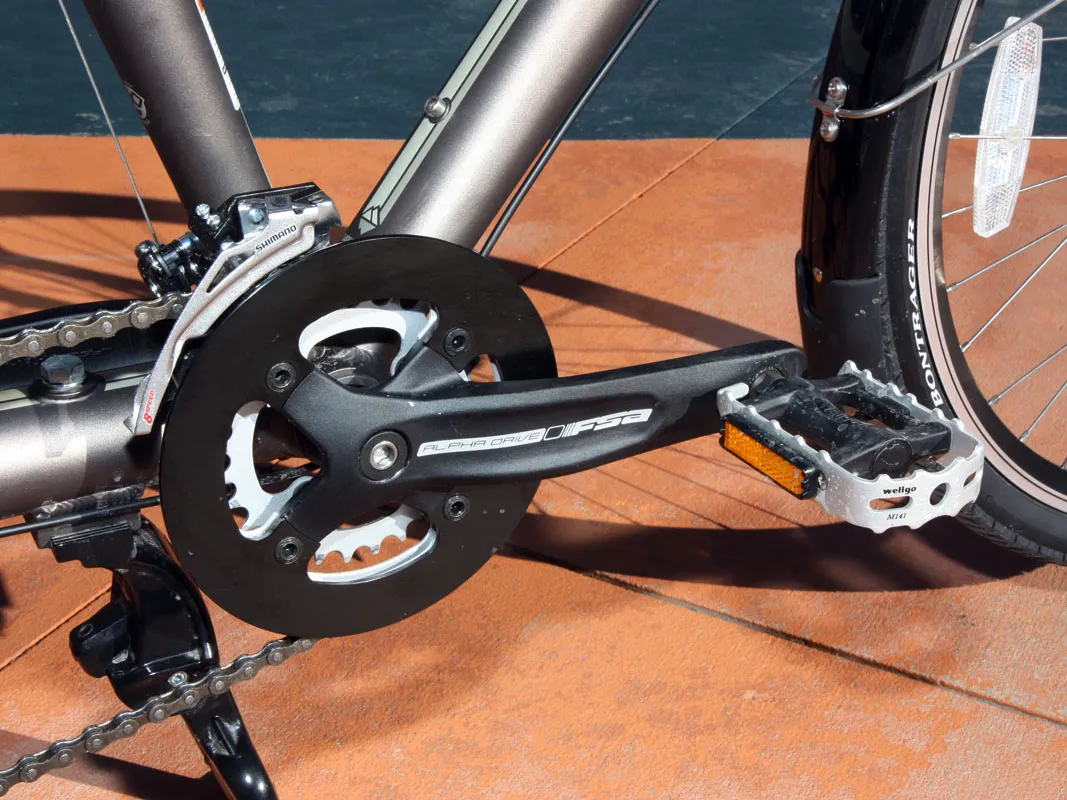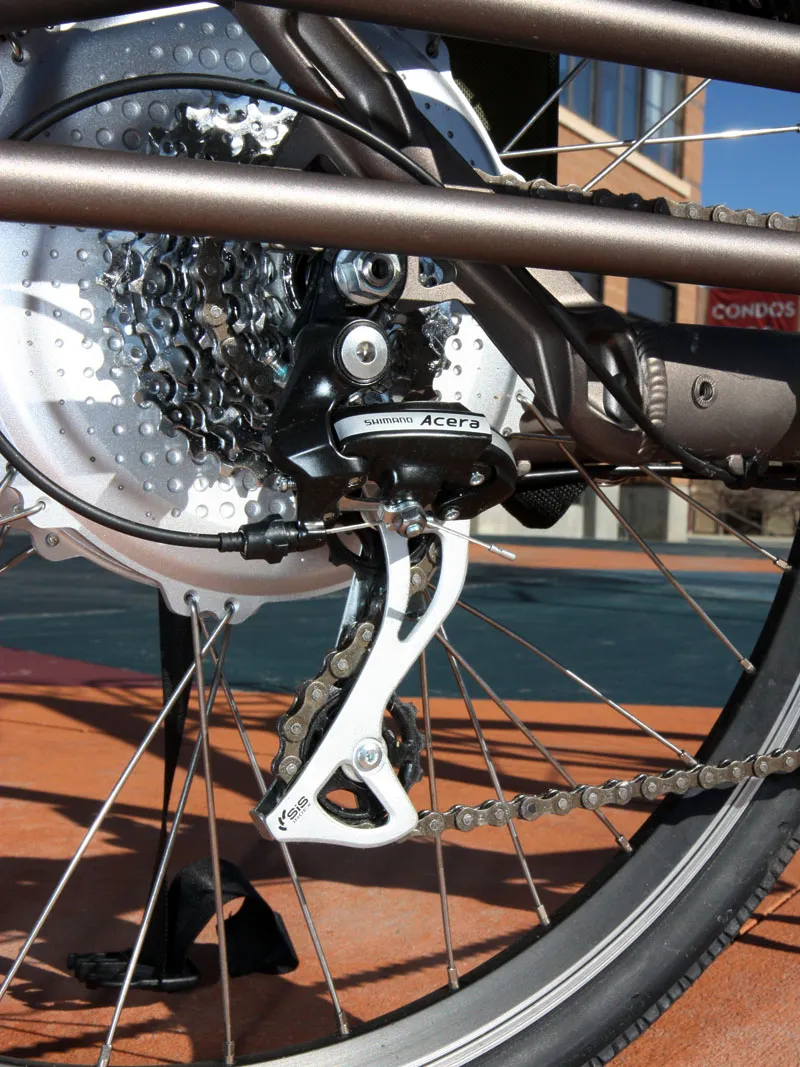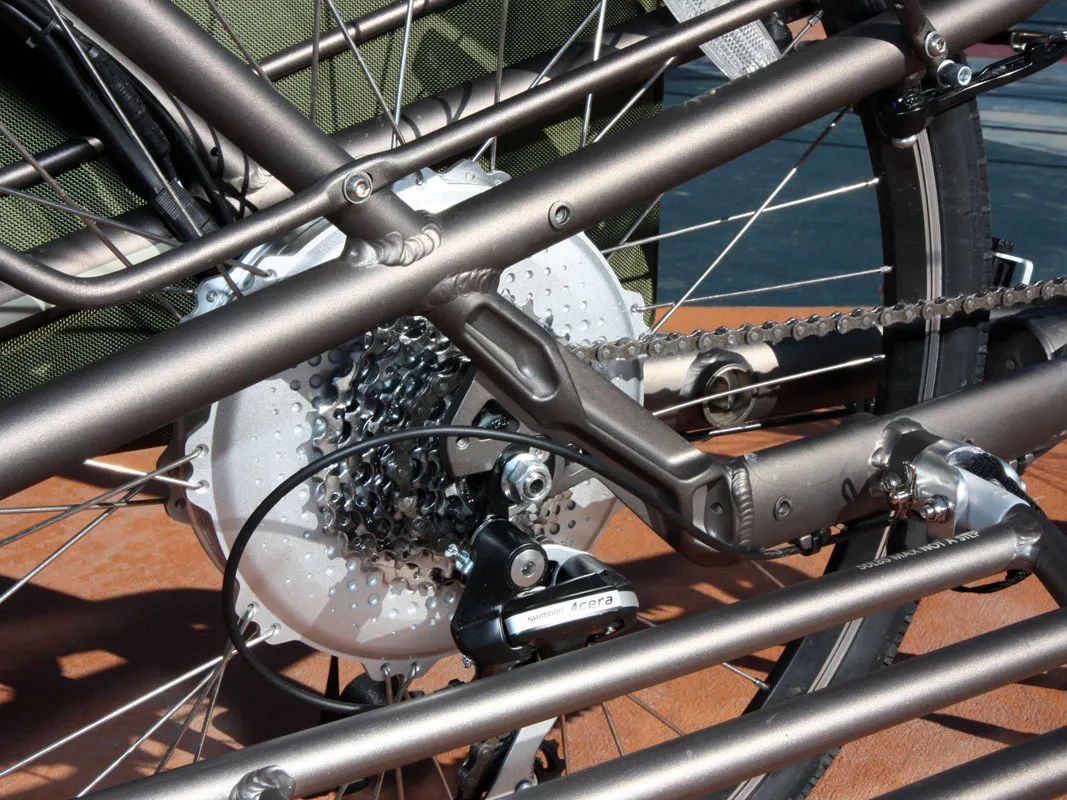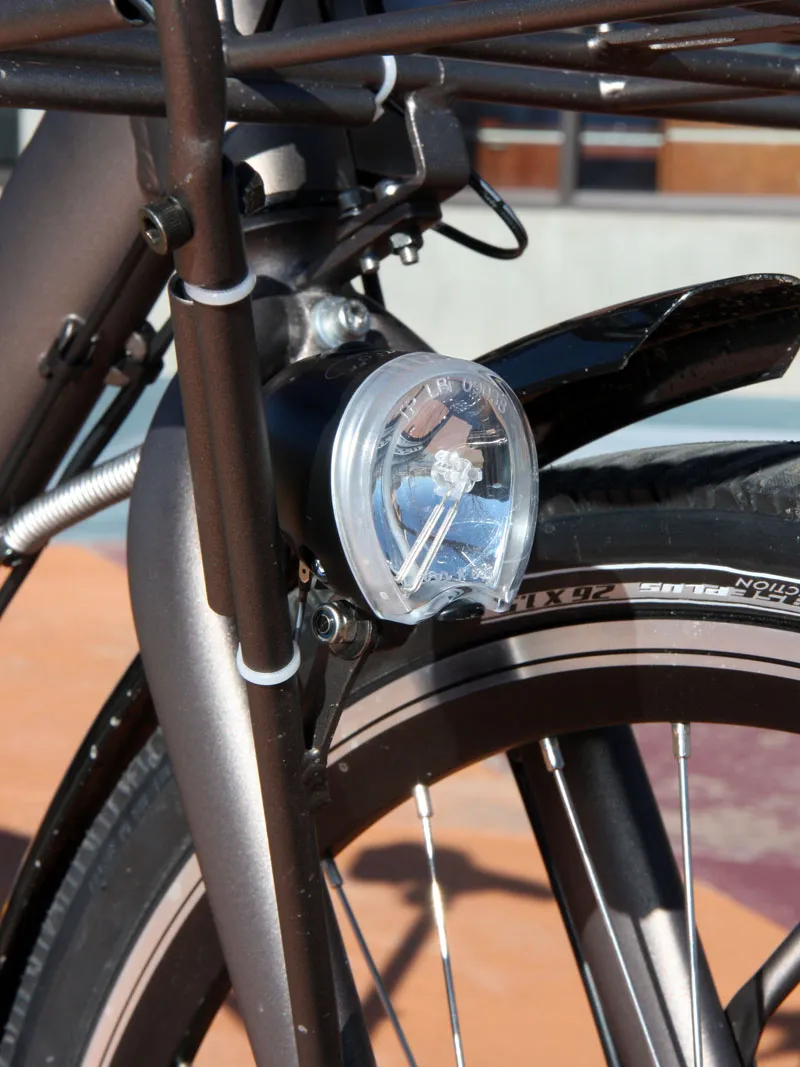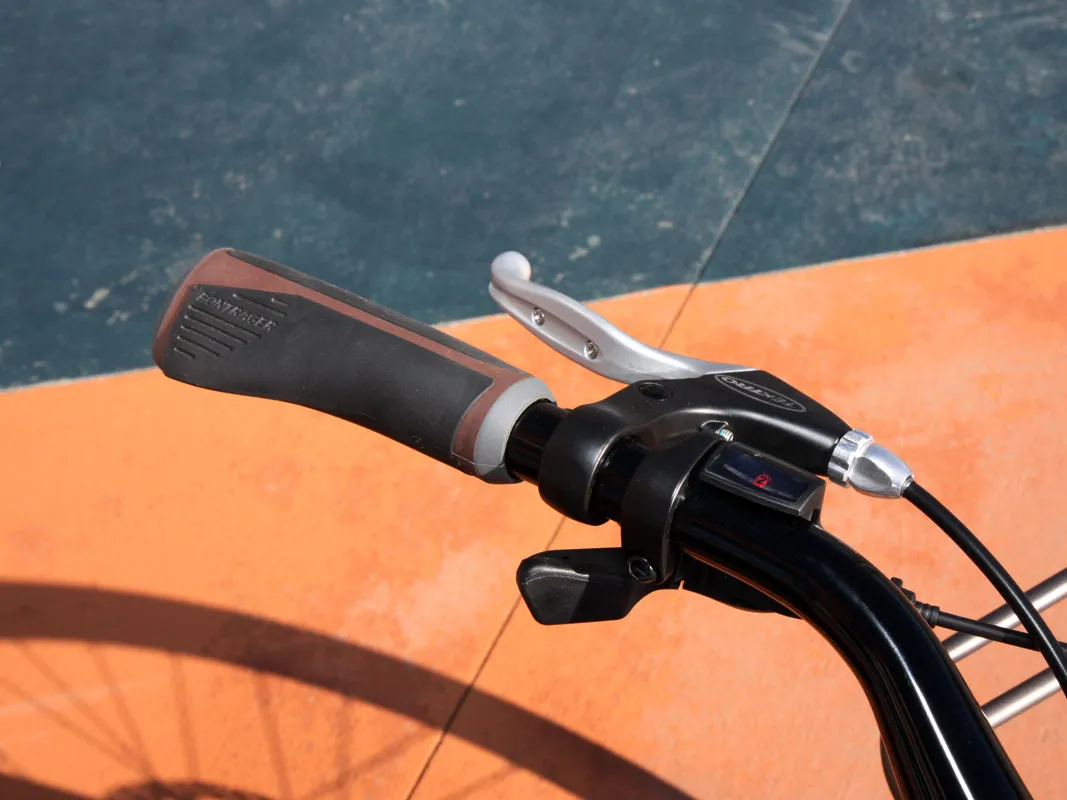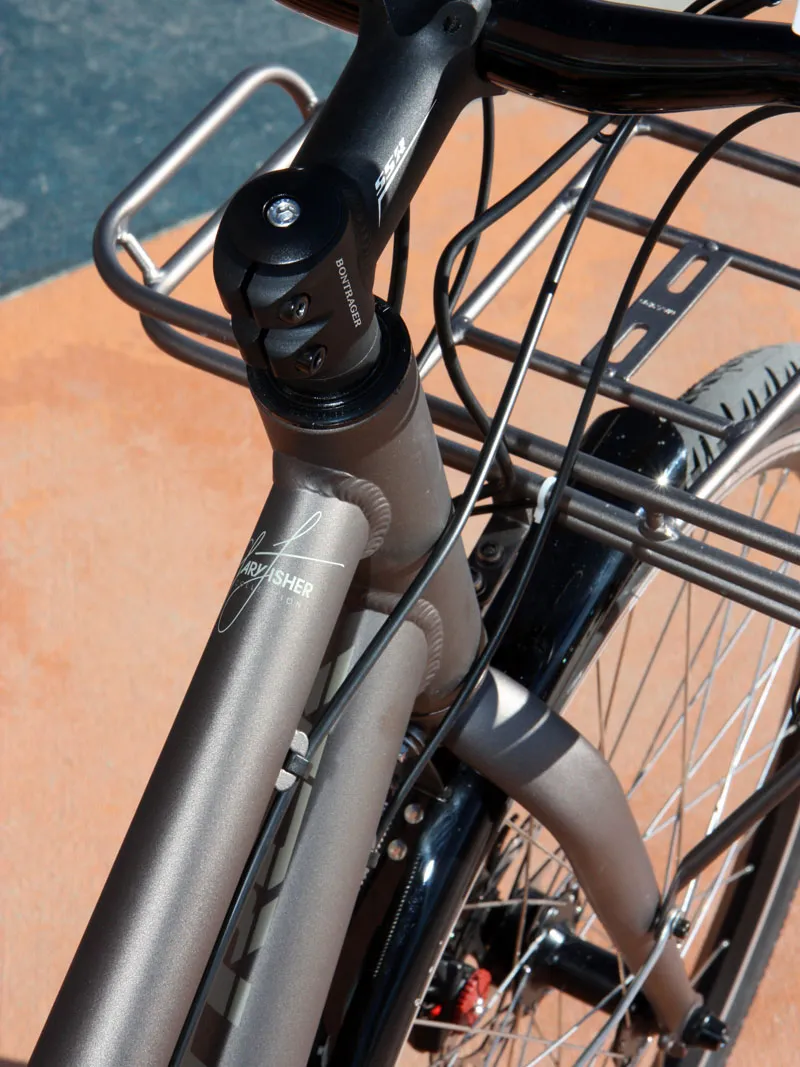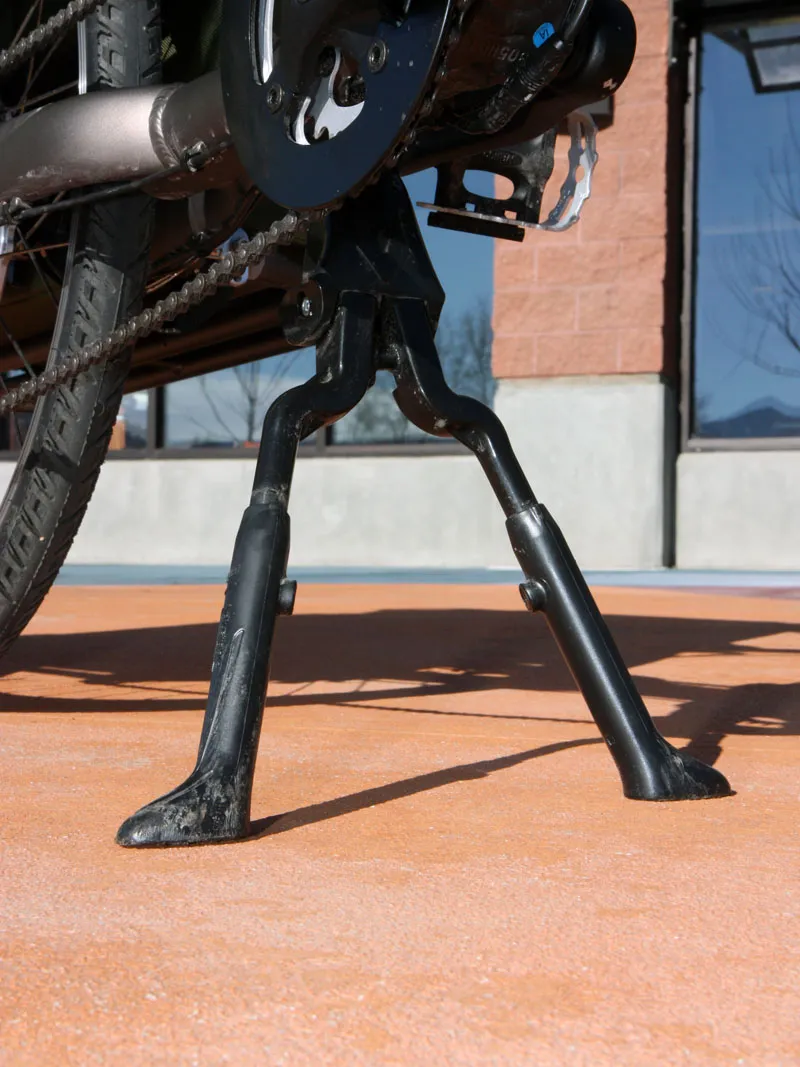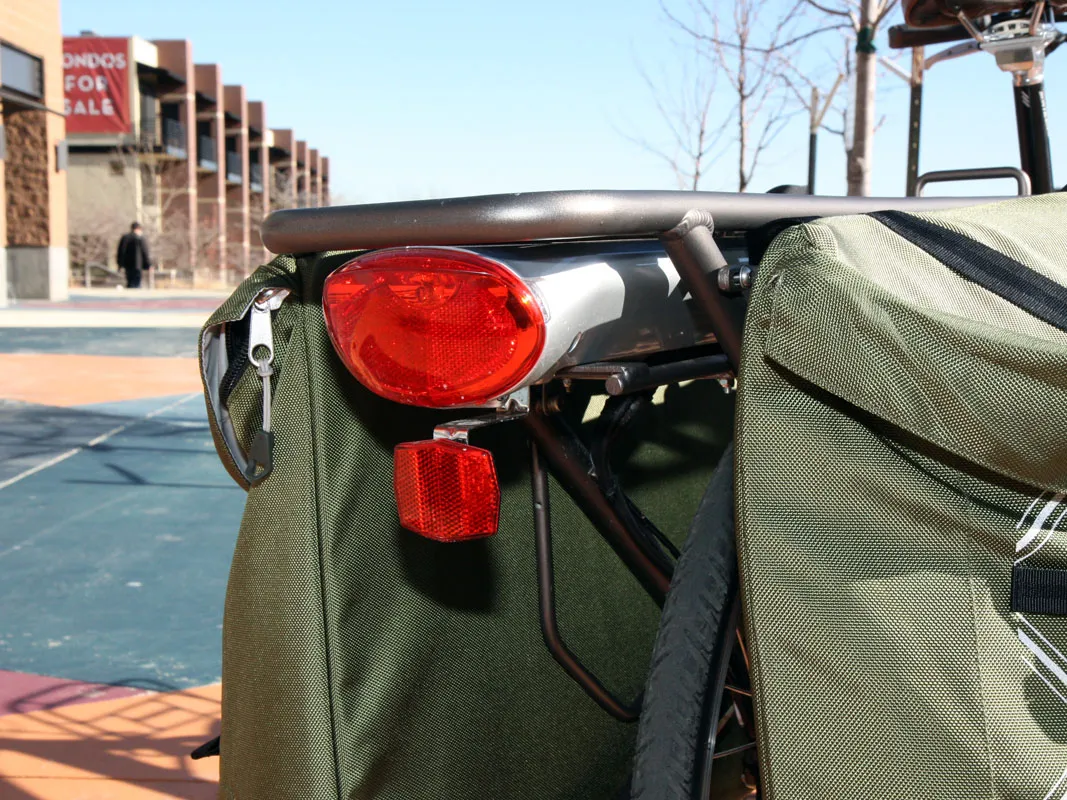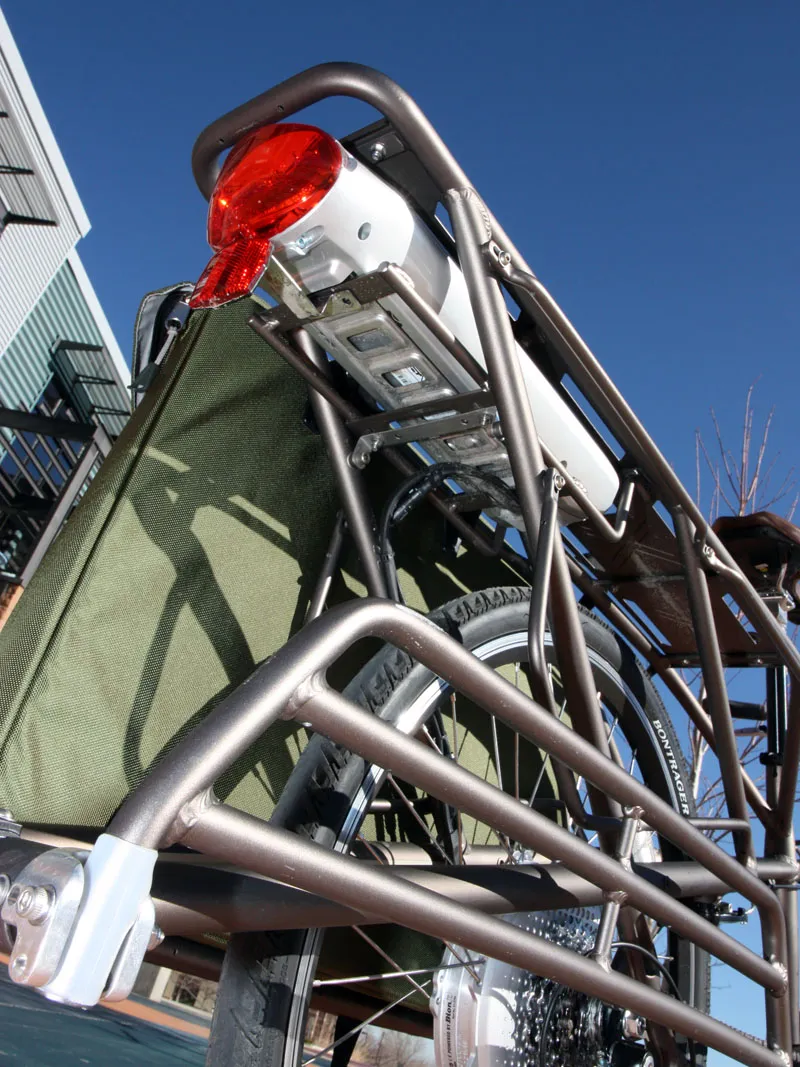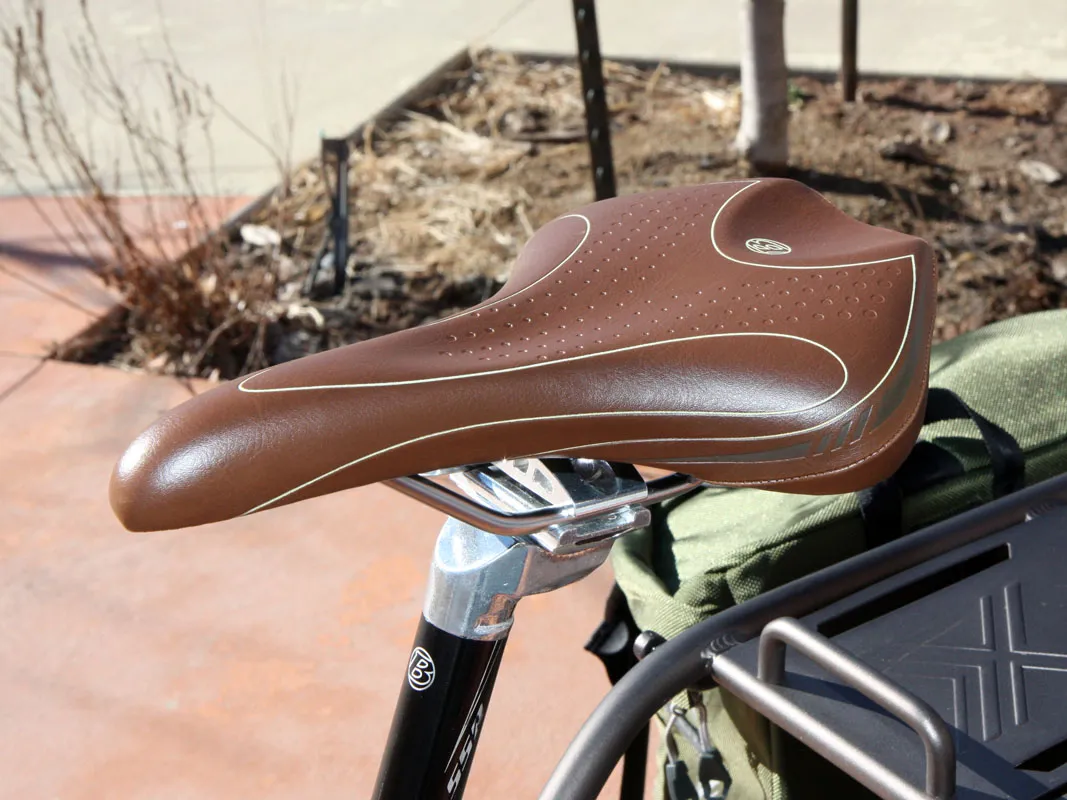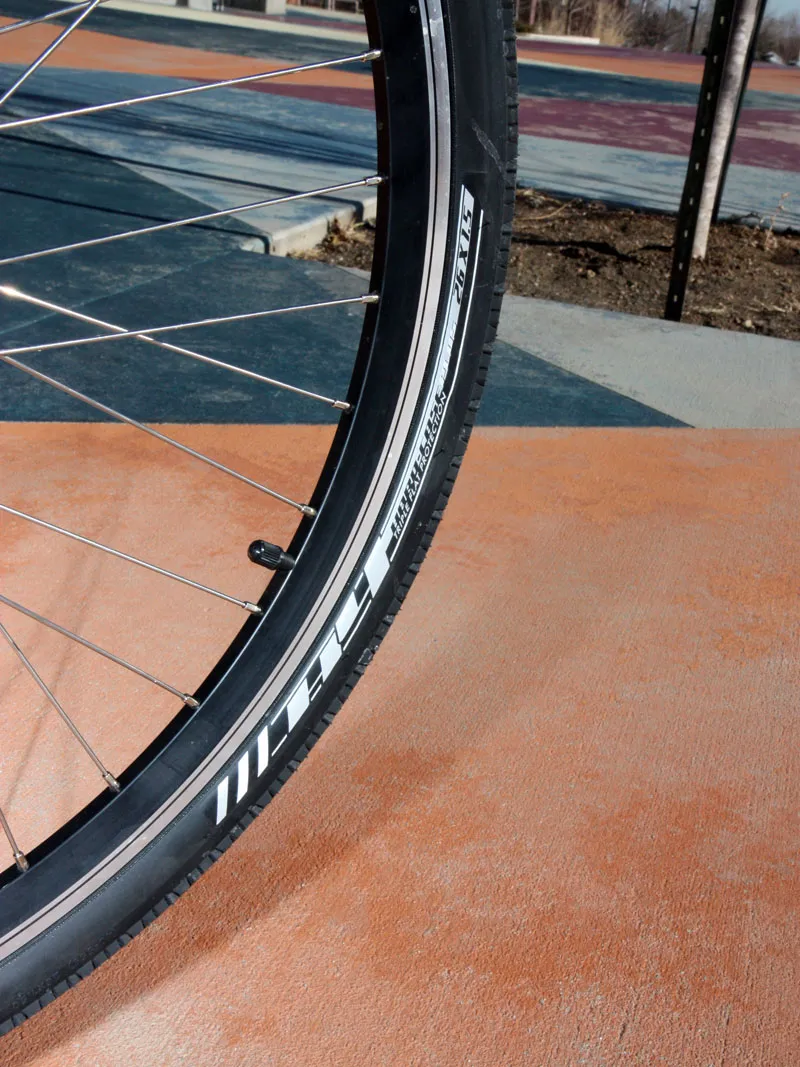Trek's utilitarian Transport+ is definitely one of the more unique rigs we've tested here at BikeRadar, being not some asphalt-eating road bike, trail-conquering mountain bike or even an everyday commuter. No, this is a machine whose sole purpose is to carry stuff and to that end it's been an exceptional companion over its six weeks of near-daily service.
Since early January, the Transport+ has been used on nearly three dozen separate in-town trips comprising roughly 200km (120 miles) of distance. That's not a huge amount of ground covered on paper but significant in that every one of those trips has been in lieu of a car. And the Transport+ wasn't left at home in inclement weather, either. Temperatures of -27°C (-17°F)? Check. Packed snow and slush? Check. Loose fluffy snow over a recent ice storm? Check, check.
And by "stuff", we mean a whole lot of it. Trek rate the total cargo capacity at 100kg (225lb), distributed between the giant upper rear rack, the two low-riding cargo shelves and the generously sized front rack, and while our test bike has never been quite that heavily laden, that isn't to say it's led an easy life. To date, the Transport+ has carried a snowboard, multiple single and double wheel boxes, full-sized bike boxes, two bikes (!), a large dog crate and countless other parcels.
Not all at once, mind you, but in various combinations that would have been impossible with a backpack and the panniers of a typical commuter. A variety of tie-down points makes it easy to secure all that cargo, and for smaller items there's ample space in the giant rear panniers – enough for four standard-sized grocery bags, in fact.
Not surprisingly, all that utility doesn't exactly add up to a thrilling ride. Unladen and without the included single pannier, the Transport+ weighs in at a hefty 28.6kg (63lb) and it doesn't take a wild imagination to see that adding the full cargo capacity would make for a tough job from stoplights and going uphill. The positioning is bolt upright, the wheelbase is just a bit shy of a supertanker, and nowhere in any of the marketing spiel are the words "lateral stiffness" and "vertical compliance" mentioned – for good reason.
Luckily, though, a good chunk of that weight is attributed to the BionX pedal-assist rear hub motor and its accompanying rechargeable LiMn battery pack. Yep, this sucker's packing heat and as a result, it's been incredibly fun to ride. An easy-to-use computer head controls the four boost settings, which match 25, 50, 100 or 200 percent of your pedaling input up to a whopping 350W of peak power. At full boost it's laughably easy to spin out the 38-11T top gear and the system handily tackles relatively steep grades (as in 10 percent or more).
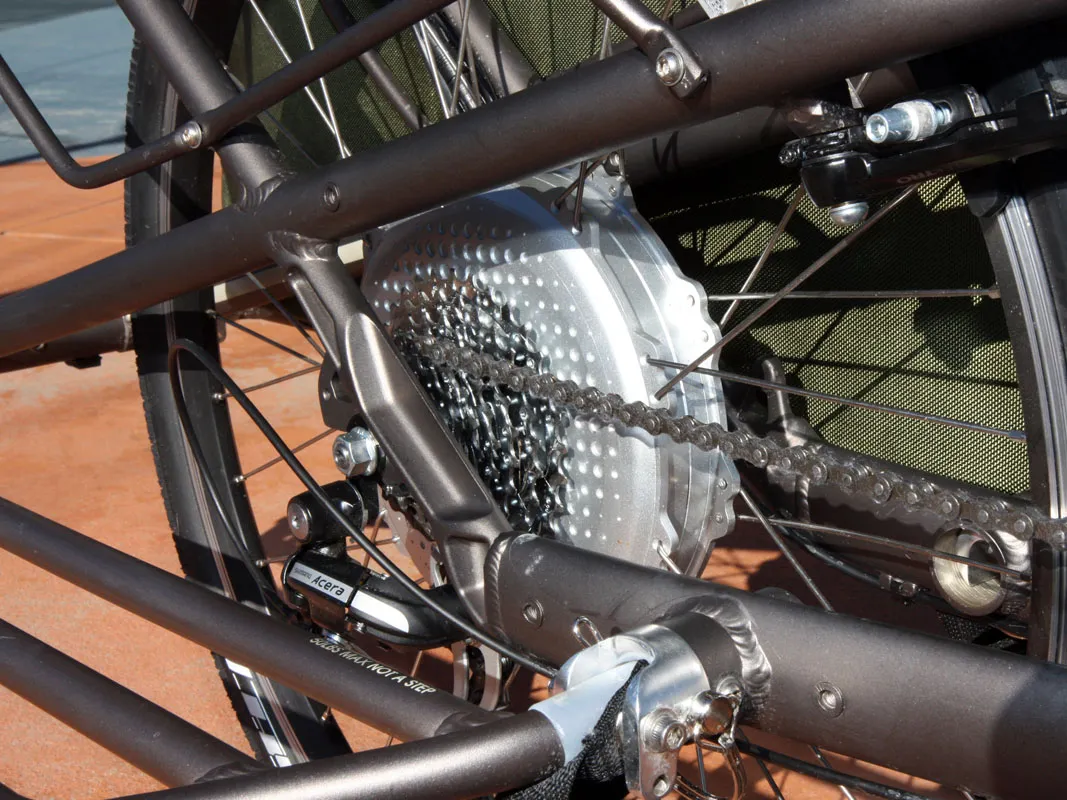
Top speed isn't the idea here, though. The goal is to remove as much of the burden of using a bicycle for short trips as possible and to that end, the BionX addition is absolutely fantastic. One-quarter boost is just about right to make the Transport+ feel 'normal' while one-half is close to ideal for heavier loads when traveling on fairly flat ground.
Got hills? One hundred percent boost is remarkably effective and 200 percent is just the thing if you're running late for work. That power comes on deceptively smoothly, too. It doesn't surge uncomfortably from stops and doesn't pulse with each pedal stroke. In essence, you can think of it as a turbo for your legs and like most of the best so-equipped automobile engines these days, there's almost no lag to speak of.
We haven't attempted a maximum range test for the battery, preferring instead to go about it from a 'real world' perspective since mileage will heavily depend on rider and cargo weight, boost level, how often you're accelerating, percent grade, and numerous other factors. Despite warnings from Trek employees about degraded battery life in extremely cold weather, it simply hasn't been an issue.
BionX claim up to a 90km range on the lowest setting "under ideal conditions" but come on now, let's get real. Over our six weeks of use, the battery's been charged no more than three times and there are still two of four bars left on the meter. The longest single-day round-trip of 16km (10 miles) with 180m (600ft) of climbing, lots of cargo and several stops ate up just two bars using one-quarter to one-half boost most of the time, and not once have we been left having to fend for ourselves.
Even if that does happen, the Transport+'s low gearing makes it surprisingly manageable under purely human power, provided you've got a fair amount of fitness. Either way, the reality is that few people are likely to use this bike for long trips out of town. For frequent in-town use, the battery capacity should be ample, assuming you're not doing burnouts all day or doing hill repeats in San Francisco with bags of concrete. Simply plug the thing in every few days and in most cases, you should be good to go.
Long-term, Trek say the battery will handle up to 600 charge cycles before the capacity starts to degrade. Based on a weekly charging schedule, that'd net you over 12 years of service before a replacement is needed, which is a good thing since they retail for US$600. Additional handy features include integrated front and rear lights for nighttime errands, a regenerative brake function to help extend battery life, a front fender, and a low standover height and generous seatpost adjustment range to accommodate multiple users in a single household.
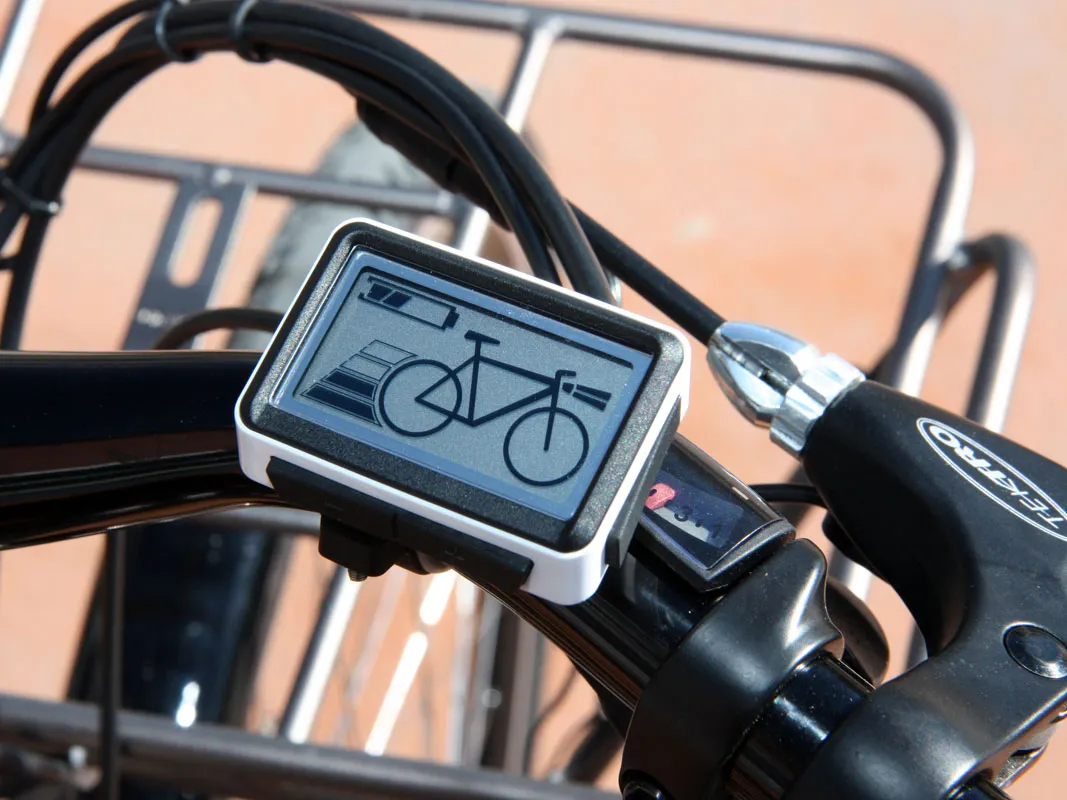
Utilitarian build kit
Aside from the high-zoot BionX system, the rest of the build kit is distinctly geared towards a utilitarian lifestyle. The 2x8 drivetrain includes low-end Shimano derailleurs front and rear, an FSA solid aluminum crankset with steel chainrings and a square-taper bottom bracket interface, and the shifters are basic Shimano Rapidfire units with optical gear indicators. Trek fit an Avid BB5 mechanical disc brake with a 160mm rotor up front to provide sufficient stopping power while a cheap Tektro V-brake is fitted out back (both the frame and BionX hub are set up for a disc brake, though, should you choose to upgrade).
Wheels are heavy-duty items with relatively wide double-wall aluminum rims, thoroughly reinforced Bontrager H4 Hard-Case Plus tires with fairly easy-rolling slick tread, and 36 spokes each tying everything together. The cockpit is likewise intended for urban trips, with upright positioning provided by the comfortable Capital Urban handlebar, SSR stem and H1 saddle, all from Bontrager.
Is the build kit fancy or light? Nope, and needless to say, there's not a lick of carbon fiber to be found. But it all works and gets the job done with quiet competence. Most importantly, we never paid attention to any of it while we were hauling all of our gear around which is perhaps the best compliment we could bestow. So far the only maintenance required has been tire inflation and chain lube, and throughout the test period it's been sat outside through a Colorado winter.
Nearly a home run
As a replacement for a dinosaur-burning automobile for short in-town trips, the Transport+ has proven to be highly effective – provided your family, schedule and logistical situations allow for a one-person mode of transportation and a few extra minutes in your day. Overall, it's been a very reliable and utterly useful workhorse. But even so, there are a few issues we'd like to see addressed moving forward.
No-one is going to expect the Transport+ to feel like a race bike but even so, there's enough frame flex that it can be unnerving at times, especially with a heavy load. Trek have decided on TIG-welded aluminum construction instead of heavier steel to help keep the weight down but there's enough torsional flex from end-to-end that the bike can be tricky to pilot, even for a skilled rider. On a couple of instances, there was enough twist to set off a sort of low-frequency speed wobble. We have reasonable expectations for a bike like this and the flex was still manageable, but Trek would be wise to task their engineers with stiffening the thing up.
Other complaints are more minor and easier to live with. The independently adjustable two-leg kickstand is a good idea but woefully inadequate in reality. The footprint is too narrow and it's placed much too far ahead of where the bulk of the load is located. Loading the rear racks is tricky enough as it is without having to constantly worry about the bike tipping over. Xtracycle's wide-stance solution seems much more effective.
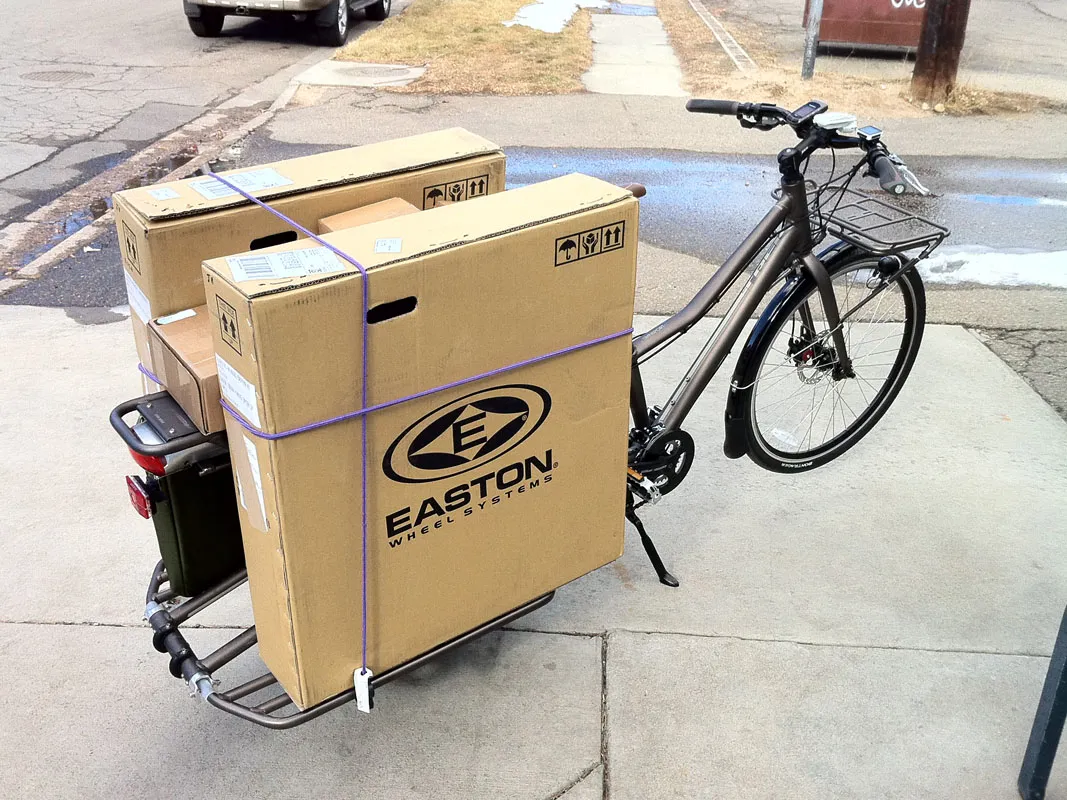
Going outside the company walls for the BionX system is a good move for several reasons but some of the adaptations required to get it to work on the Transport platform leave a bit to be desired. The battery has no grab handle and is hard to remove from the rack (normally you could push the battery out from the front), and while the front and rear lights are nice to have and usefully bright, the front one has a narrow beam that can't be aimed left-to-right and the rear has no flashing mode. As a result, we supplemented them with higher-output battery-powered units from Cateye.
Other desired improvements include a rear fender so the backs of your legs and the bottom of the battery won't get wet in inclement weather, a wider handlebar for more control, and easier access to the removable battery's lock core. Including a pair of cargo panniers instead of just one would help distribute the load more evenly, too.
Option #2
Kudos to Trek (and an increasing number of other big brands) for producing such a machine as the Transport+. It has enough cargo capacity to make it legitimately useful as a substitute for an automobile in most situations and the BionX pedal-assist system largely negates most people's fears that they might not have the fitness to drive such a beast.
It's very expensive at over US$2,800, though, so unless you're able to get rid of a vehicle or otherwise reduce your recurring costs (insurance, fuel, etc), it's tough to make the argument that a Transport+ will save you money long-term. But to that end, Trek also offer the standard Transport that does without the BionX system. That option will obviously be harder to pedal but it's roughly half the cost and is 9.5kg (21lb) lighter.
Either way, our experience has shown cargo bikes like this to be remarkably viable as alternative means of transportation. Go ahead and try one – you might be surprised.
